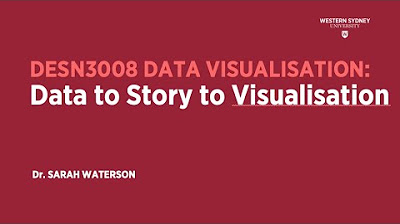How to Choose the Best Chart for Your Data Visualization: Ask Yourself These 3 Key Questions
Summary
TLDRIn a data-driven world, understanding how to effectively visualize data is crucial for everyone, not just tech professionals. This video emphasizes three key questions to guide data visualization: the type of data being analyzed, the communication objective (comparison, composition, distribution, or relationship), and the audience's needs. It highlights various visual tools appropriate for different data types and stresses the importance of simplicity and clarity in presentations. Ultimately, tailoring visuals to the audience—whether analysts, managers, or executives—ensures impactful communication of insights.
Takeaways
- 📊 Data skills are essential for everyone, not just tech professionals, as they influence daily decisions and interactions.
- ❓ Before choosing a data visualization method, ask three key questions: what type of data you have, what you want to communicate, and who your audience is.
- 🌍 Understand the type of data you're working with, such as geospatial, time series, categorical, or hierarchical, to choose the right visual.
- 📈 Different visuals serve different purposes: use line charts for time series, bar charts for categorical data, and maps for geospatial analysis.
- 🔍 Clearly identify what you want to communicate: is it a comparison, composition, distribution, or relationship?
- 📉 For comparisons, bar and line charts are effective, while pie charts and stacked charts work well for composition.
- 📊 Use histograms or box plots for distribution visuals to show frequency and variations in data.
- 📉 Relationship visuals like scatter plots help illustrate correlations between variables.
- 👥 Tailor your visuals to your audience: analysts prefer detailed data, managers need summarized insights, and executives want high-level KPIs.
- 📚 Prioritize simplicity and clarity in your visuals, avoiding complexity unless necessary, to effectively communicate your message.
Q & A
What is the importance of data literacy in today's world?
-Data literacy is essential as everyone interacts with data, not just tech professionals. It enables individuals to make informed decisions based on data analysis and visualization.
What are the three key questions to ask when visualizing a data set?
-The three key questions are: 1) What type of data are you working with? 2) What exactly do you want to communicate? 3) Who is the audience, and what do they need?
How does the type of data influence visualization choices?
-The type of data determines which visualization is most appropriate. For instance, maps are used for geospatial data, while line charts are suited for time series data.
What are some common types of data visualizations?
-Common visualizations include bar charts, line charts, pie charts, histograms, scatter plots, and tree maps, each serving different purposes based on the data type and communication goal.
What should you consider when deciding what to communicate?
-You should consider whether you want to show a comparison, composition, distribution, or relationship, as this will dictate the type of visualization to use.
What types of visuals are best for comparing data?
-Bar charts, column charts, line charts, and area charts are effective for comparing data over time or across categories.
What is the purpose of composition visuals?
-Composition visuals, like stacked bar charts or pie charts, break down the components of a whole, illustrating how different parts contribute to the total.
How can you show distributions in your data?
-Distributions can be visualized using histograms, box plots, density plots, and violin charts to represent the frequency of values within a dataset.
What visualizations are effective for showing relationships between variables?
-Scatter plots, bubble charts, heat maps, and correlation matrices are effective for illustrating relationships and correlations between multiple variables.
How should visualizations be tailored to different audiences?
-Visualizations should be designed based on audience needs; analysts prefer detailed visuals, managers favor summarized insights, and executives require high-level KPIs with minimal detail.
Outlines

Esta sección está disponible solo para usuarios con suscripción. Por favor, mejora tu plan para acceder a esta parte.
Mejorar ahoraMindmap

Esta sección está disponible solo para usuarios con suscripción. Por favor, mejora tu plan para acceder a esta parte.
Mejorar ahoraKeywords

Esta sección está disponible solo para usuarios con suscripción. Por favor, mejora tu plan para acceder a esta parte.
Mejorar ahoraHighlights

Esta sección está disponible solo para usuarios con suscripción. Por favor, mejora tu plan para acceder a esta parte.
Mejorar ahoraTranscripts

Esta sección está disponible solo para usuarios con suscripción. Por favor, mejora tu plan para acceder a esta parte.
Mejorar ahoraVer Más Videos Relacionados

VISUALISASI INFORMASI: #5 - TAHAPAN VISUALISASI INFORMASI

DataVis : Pod 02 Data Storytelling overview

4 Question Categories to help choose your chart types for Data Visualization

Teknik Presentasi Ilmiah

PR Module 6 Session 4 Youssef El Hely YQC

Data Visualization Techniques | Data Visualization Techniques and Tools | Data Visualization Trends
5.0 / 5 (0 votes)
